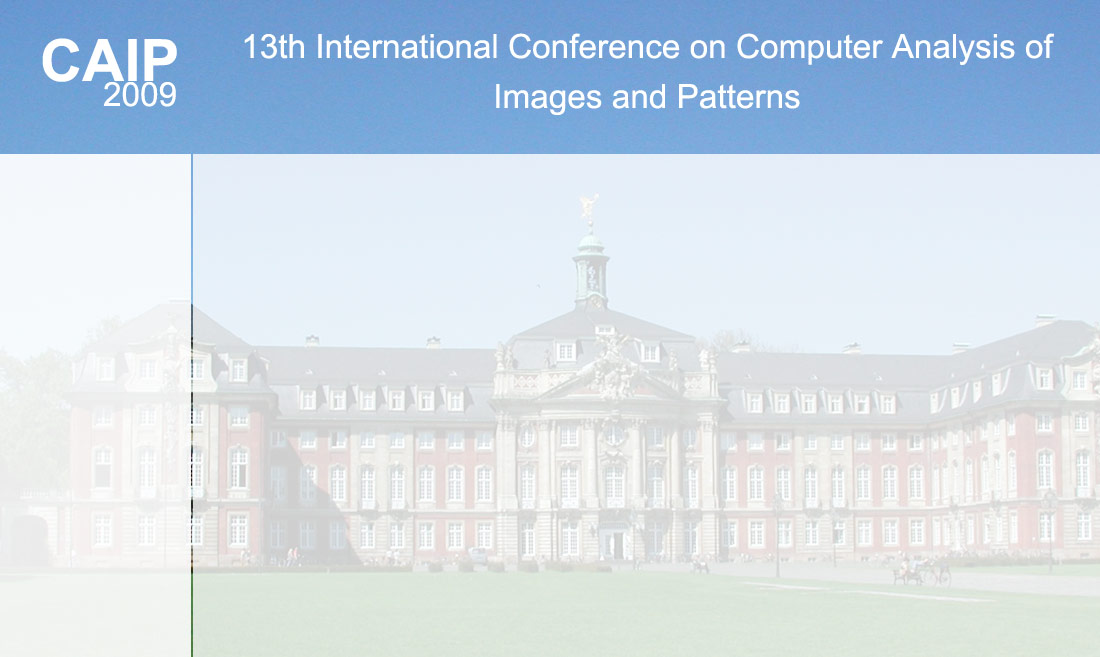IAPR invited speakers:
Dr. David G. Stork
Computer
vision and pattern recognition for the analysis of paintings and drawings: New rigorous methods complement humanistic scholarship in the study of fine art
Dr. Aljoscha Smolic
3D Video and Free Viewpoint Video – Technologies, Applications and MPEG Standards
Computer
vision and pattern recognition for the analysis of paintings and drawings:
New rigorous methods complement humanistic scholarship in the study of fine art
Dr. David G. Stork
Ricoh Innovations and Stanford University, USA
www.diatrope.com/stork/FAQs.html
Joint work with Antonio Criminisi, Andrey DelPozo, David Donoho,
Marco Duarte, Yasuo Furuichi, Mohammad Irfan, Micah K. Johnson, David Kale,
Ashutosh Kulkarni, Petria Noble, M. Dirk Robinson, Silvio Savarese, Morteza
Shahram, Ron Spronk, Christopher W. Tyler, Lisa Wong and Li Zhang
How do these computer methods work? What can computers
reveal about images that even the best-trained connoisseurs, art historians and artist cannot? How reliable are
they for detecting forgeries? How much more powerful and revealing will
these methods become? In short, how is computer image analysis changing our
understanding of art? This profusely illustrate
lecture for non-scientists will include works by many leading painters. You may
never see paintings the same way again.
Dr. David G. Stork is Chief Scientist of Ricoh Innovations and Consulting Professor of Statistics at
Stanford University, where he has held appointments in the departments of Computer Science, Electrical Engineering, Statistics, Psychology and Art and Art History. He is a Fellow of the International Association for Pattern Recognition and has
published in optics and art for over two decades,
including Seeing the
Light: Optics in nature, photography, color, vision and holography
(Wiley), the leading textbook on optics in the arts. A graduate in physics of
the Massachusetts Institute of Technology and the University of Maryland at College Park, he also studied art
history at Wellesley College and was
Artist-in-Residence through the New York State Council of the Arts. He has
taught courses such as "Optics, perspective and Renaissance
painting," and "Computer vision and image analysis in the study of art," over the last quarter century variously at leading liberal arts and research universities such as
Wellesley College, Swarthmore College, Clark University and Stanford
University. He holds 38 US patents and has published numerous technical papers
on human and machine learning and perception of patterns, physiological optics,
image understanding, concurrency theory, theoretical mechanics, optics, image
processing, as well as six books or proceedings volumes, including Pattern Classification
(2nd ed.), the world's all-time best-selling textbook in the field, translated
into three languages and used in courses in over 250 universities worldwide and
co-editor of Computer
image analysis in the study of art
(SPIE 2008), the first symposium volume on the topic. He has served on the
editorial boards of five international journals and has delivered over 59
plenary, invited or distinguished lectures at
universities and conferences (atop nearly 200 traditional invited colloquia and
seminars). He created the PBS television documentary 2001: HAL's Legacy based on his book HAL's Legacy: 2001's computer as
dream and reality (MIT).
top
3D Video and Free Viewpoint Video – Technologies, Applications and MPEG Standards
Dr. Aljoscha Smolic
Disney Research, Zurich, Switzerland
http://iphome.hhi.de/smolic/
Aljoscha Smolic recently joined Disney Research, Zurich as Senior Research
Scientist and Group Leader "Video of the Future". He is also teaching at ETH
Zurich. Before he was Scientific Project Manager at the Fraunhofer Institute
for Telecommunications, Heinrich-Hertz-Institut (HHI), Berlin, and Adjunct
Professor at the Technical University of Berlin. He has conducted research on
the border line of video processing, video coding, computer vision and computer
graphics and is specifically a renowned researcher in the area of 3D video and
free viewpoint video. He published more than 90 papers in scientific journals
and conference proceedings. In this context he has been involved in MPEG
standardization activities. He chaired the MPEG 3DAV group pioneering standards
for 3D video and is among the editors of the Multiview Video Coding (MVC)
standard.
Dr. Smolic received the "Rudolf-Urtlel-Award" of the German Society for
Technology in TV and Cinema (FKTG) for his dissertation in 2002. He is Area
Editor for Signal Processing: Image Communication and Guest Editor for IEEE
Transactions on CSVT and IEEE Signal Processing Magazine. He is Committee
Member of several conferences, including ICIP, ICME, 3DTV-CON and EUSIPCO.
top





